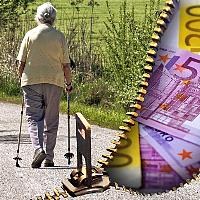(BRUSSELS) – EU states have asked the presidency to start negotiations with the Parliament on a proposal for a pan-European pension product that would make it easier for people to put money aside for their old age.
The draft regulation would provide greater choice for people who wish to save for their retirement, says the European Commission, and at the same time boost the market for personal pensions. Only 27% of Europeans between 25 and 59 years of age have subscribed to a pension product.
The pan-European pension product will “promote competition amongst pension providers,” said Bulgaria’s finance minister Vladislav Goranov, for the EU presidency, “enabling them to sell pension products outside their national markets and giving savers more choice over how and where to place their savings.”
Under the proposal, PEPPs would have the same standard features wherever they are sold. They would be offered by a broad range of providers, principally insurance companies, banks, occupational pension funds, investment firms and asset managers.
In Europe the personal pension market is currently fragmented, due to a patchwork of rules that impede the development of a market at EU level. In some member states, the market is virtually non-existent.
For products based on capital market instruments, choice is often limited. This leads to higher costs for savers and a shortage of liquidity on markets. In the United States, for instance, pension funds play a bigger role than in Europe as institutional investors.
The regulation would add a pan-European framework for people who wish to use PEPPs as a saving option. PEPPs would complement state-based, occupational and national personal pension schemes, but not replace or harmonise them.
PEPPs would present the following advantages for savers:
- more choice. Savers would choose from a broad range of PEPP providers in a more competitive environment. They would be able to choose between a default safe investment option and options with different risk-return profiles;
- consumer protection. The regulation would ensure that savers are aware of a PEPP’s key features;
- switching providers. Savers would have the right to switch providers, both domestically and across borders, after a minimum of five years from the conclusion of the contract or from the most recent switch. (They could do so more frequently if the PEPP provider so allows.) The fee for doing so would be capped;
- portability. Savers would be able to continue contributing to their PEPP if they move to another member state.
For pension plan providers, the regulation would bring the following opportunities:
- economies of scale. Providers would be able to develop PEPPs in different member states and pool assets more effectively;
- broader reach. Electronic distribution channels would enable providers to reach consumers throughout the EU;
- cross-border distribution. An EU ‘passport’ would enable providers to sell PEPPs in different member states.
Additionally, when a product reaches maturity, providers and savers would have different options for pay-outs.
Negotiations with the European Parliament can now proceed as soon as the Parliament has agreed its stance.
A qualified majority is needed for adoption by the Council, in agreement with the European Parliament.
June 2018 draft regulation on the pan-European pension product


